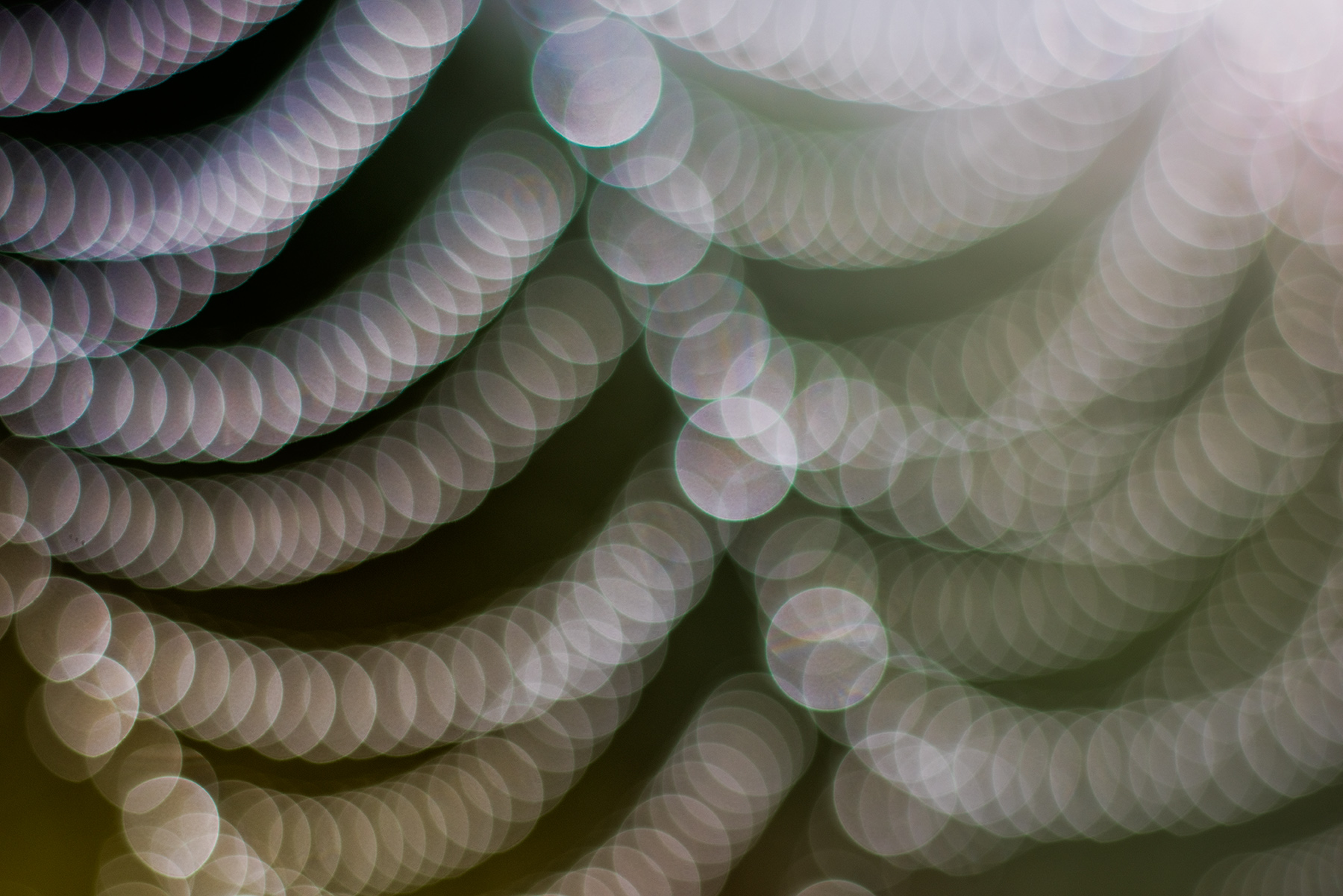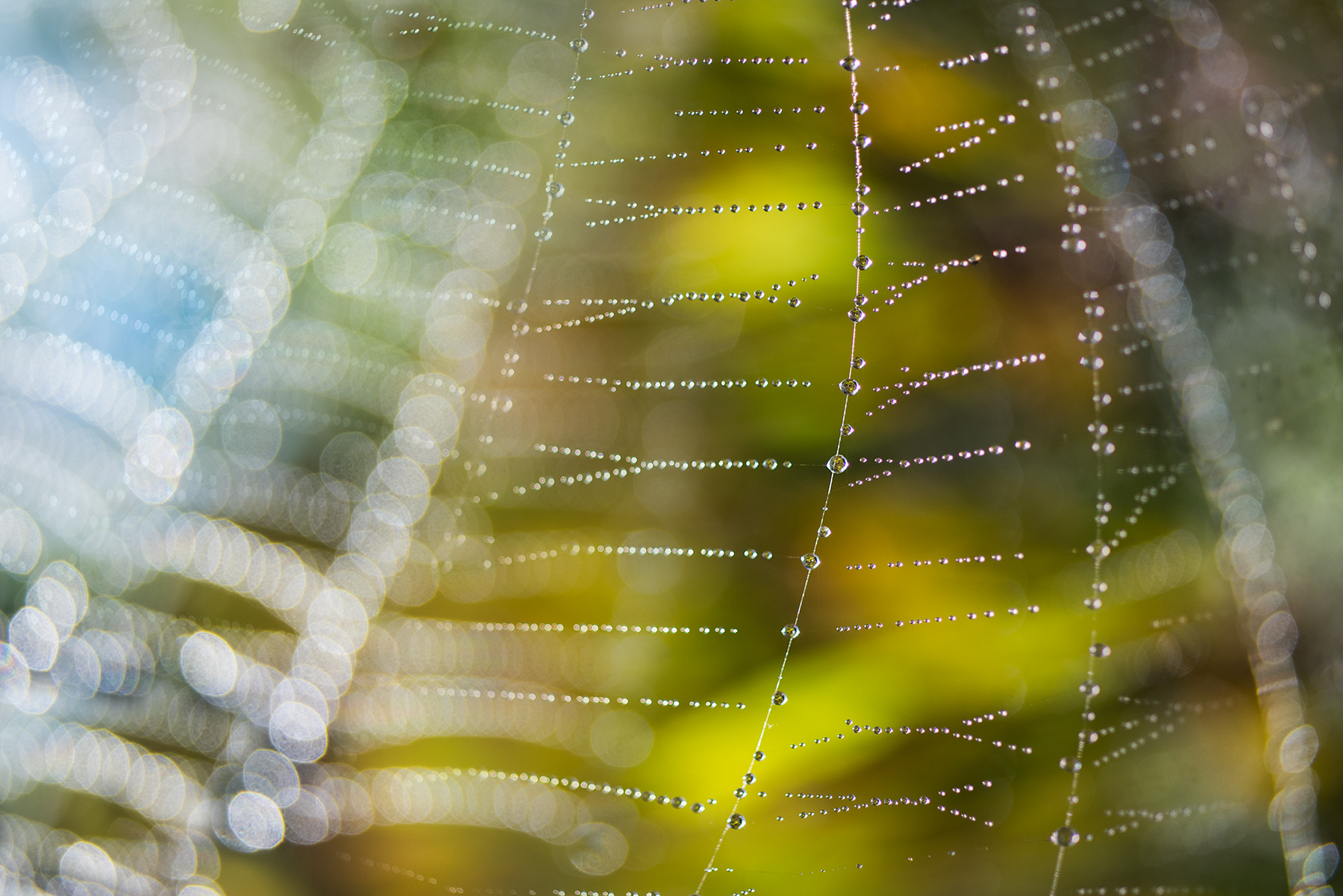The other day dawned here in Berkeley, California with low, clinging fog. It was like being in the middle of a cloud. The thing about this kind of weather is that it’s rare—and wonderful—to have the water droplets in the fog physically on myriad objects. Truly, they look like nature’s perfection, and it is paradise photographing delicate plants and the webs of spiders when these gentle fog drops stay put. Mostly, this is in the autumn when spiders begin to spin their webs in earnest.

The kids, as always, were up early, and so was I. When I noticed the wondrous fog, I threw on some clothes, gathered my camera with a Zeiss 50mm f/2 macro lens, put an extension tube in my pocket, and headed up the hillside to hunt water drops on spider webs.
My thought was to look for out-of-focus patterns in the light reflecting from the fog droplets on a spider web, with the term bokeh covering the general rubric of attractive out-of-focus photography.

Clearly, the Zeiss prime lenses are very sharp. But one thing that is less obvious that I also love about these lenses is how well they render out-of-focus areas.
As I advise in Achieving Your Potential As a Photographer: A Photographer’s Creative Companion and Workbook, it sometimes enhances a photographic quest to set technical limits. So I decided to only use the maximum aperture on my lens (f/2). Besides photographing wide-open, I planned to use aperture-priority metering, to shoot handheld (as opposed to on a tripod), and to include at least some out-of-focus elements in every frame.

With these constraints in mind, I started finding spider webs covered in morning dew. Bokeh and out-of-focus or not, the background was important to me. I needed a spider web with a clean background without wires, trash cans, or cars.
Higher and higher up the hills I went, and just as the sun was starting to burn through the fog and evaporate the water drops, I found a delightful web in great light at the crest of the hills that dominate this side of the San Francisco Bay area.
Of course, even with a fixed aperture, and letting the aperture-preferred metering handle the exposures, there were many variables that impacted the bokeh: the focus point I chose, how out-of-focus I threw the image, the directionality of the focus blur, and whether or not I used an extension tube.
Related stories: Natural Jewelry; Within the Web; Web Architecture; Web Solarization; Nature’s Harp. Also check out my book, Photographing Waterdrops.
Pingback: Best of 2015: Backwards and Forwards